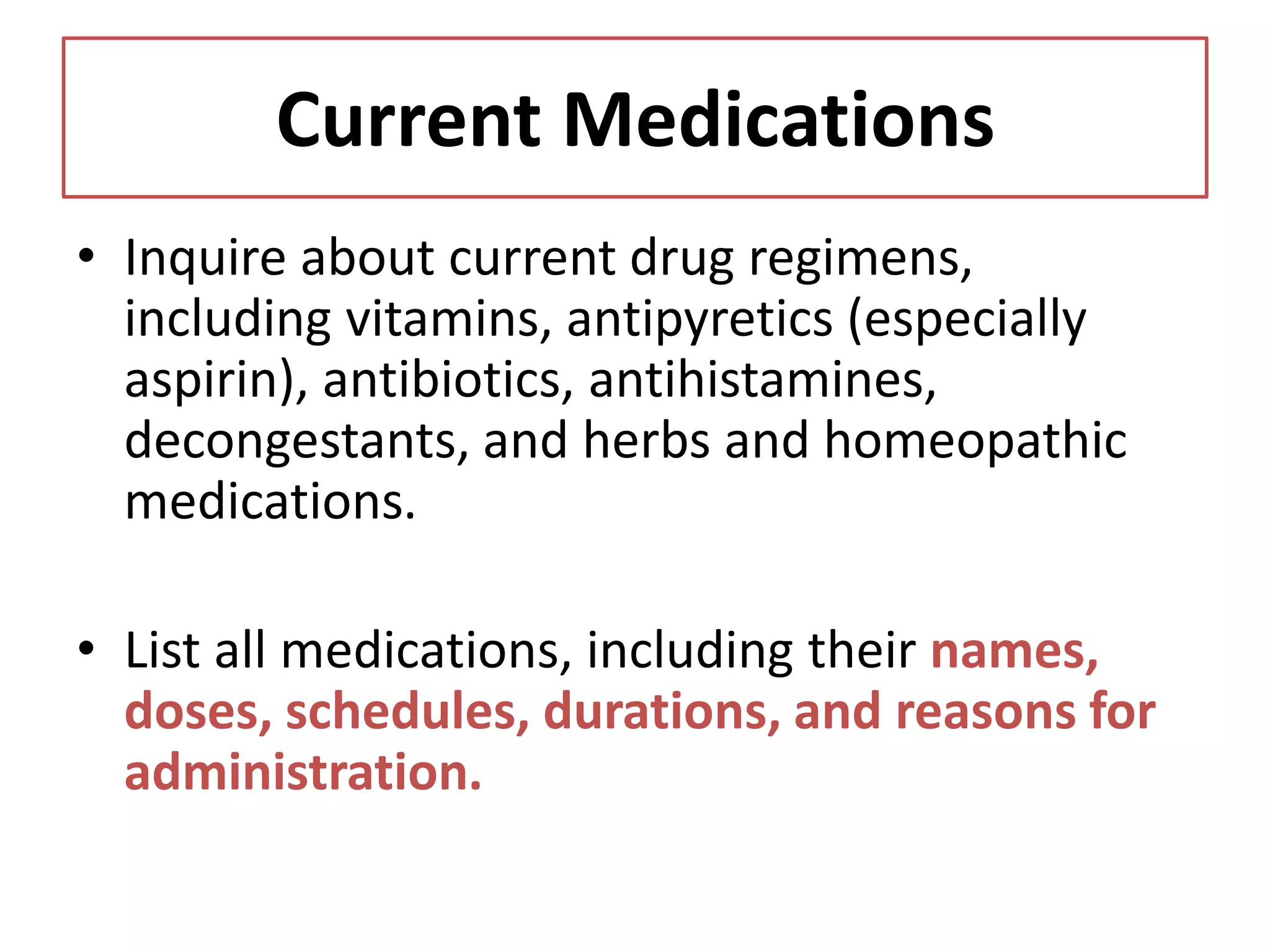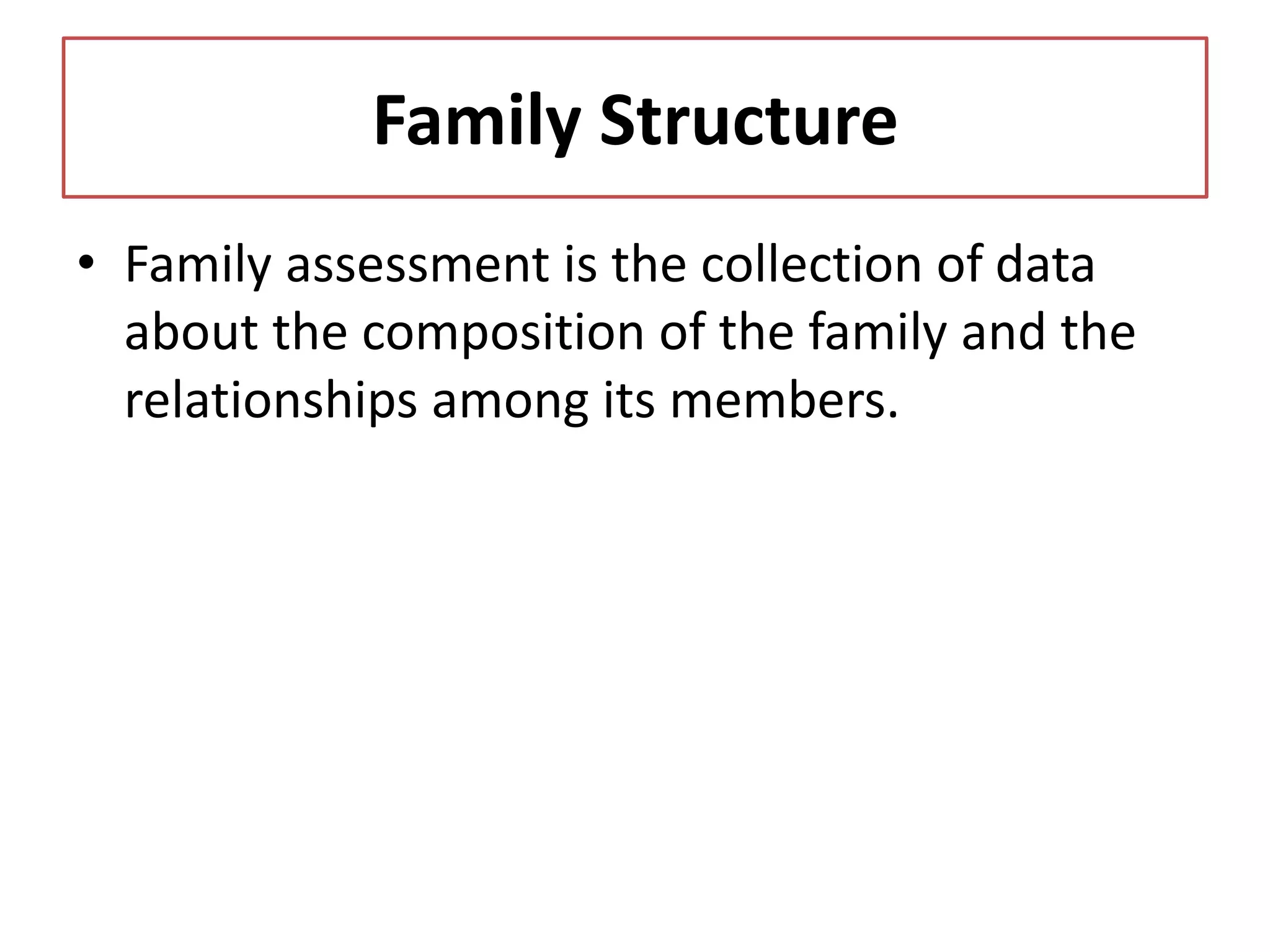This document provides an outline for conducting a physical assessment of a child. It discusses taking a health history, including chief complaint, present illness, past medical history, family history, medications, allergies and immunizations. It also covers a review of systems, physical examination, vital signs, nutritional assessment and developmental milestones. The goal is to collect comprehensive health information to identify issues, establish relationships and gather data.
















































